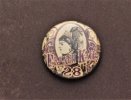JohnDF
Gold Member
- Joined
- May 14, 2018
- Messages
- 28,337
Speaking of over-used shields...
How about Case with their over-used ovals
or Northwoods with their over-used arrowhead
or Canal Street with their over-used circle
just to name a few.
I think we are lucky that GEC gives us options,
they don't just stick with the Tidioute and UN-X-LD designs.
How about Case with their over-used ovals
or Northwoods with their over-used arrowhead
or Canal Street with their over-used circle
just to name a few.
I think we are lucky that GEC gives us options,
they don't just stick with the Tidioute and UN-X-LD designs.


